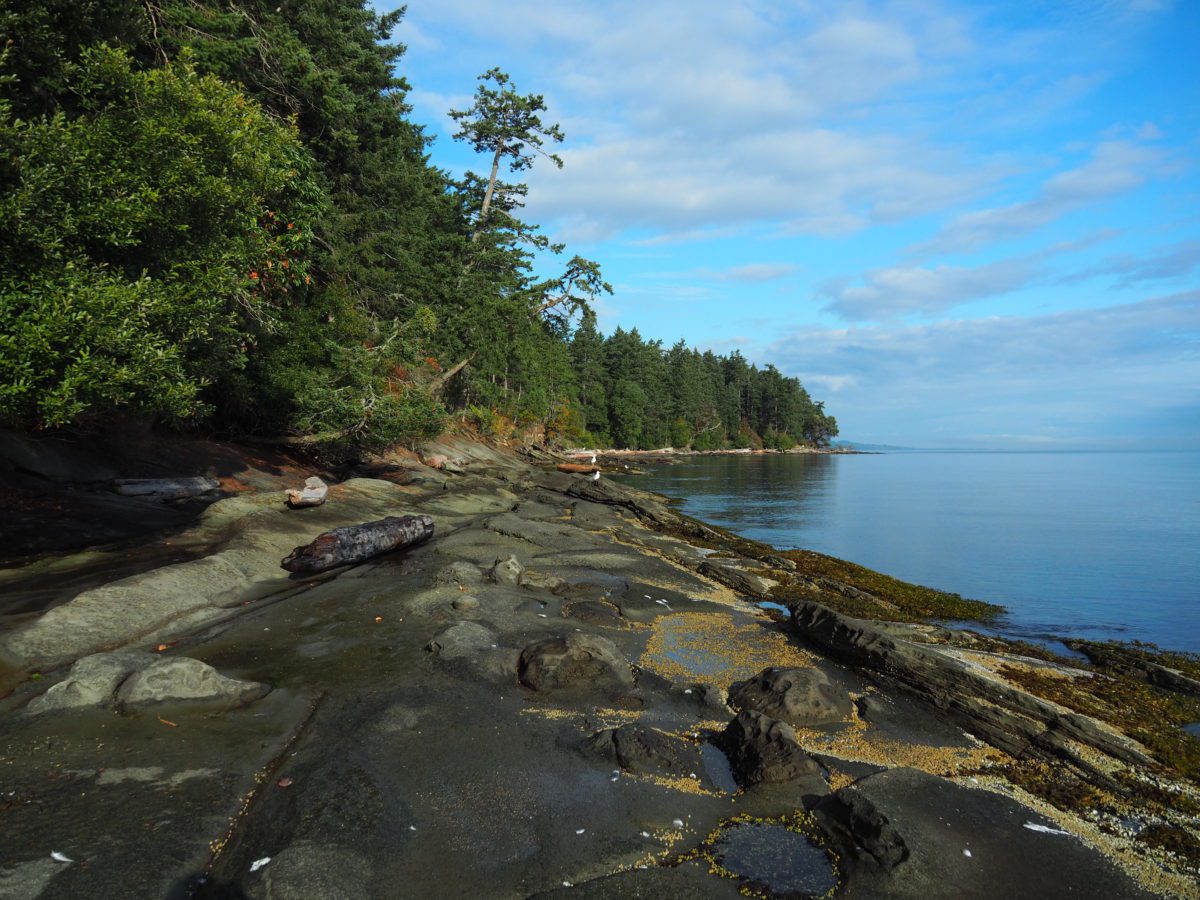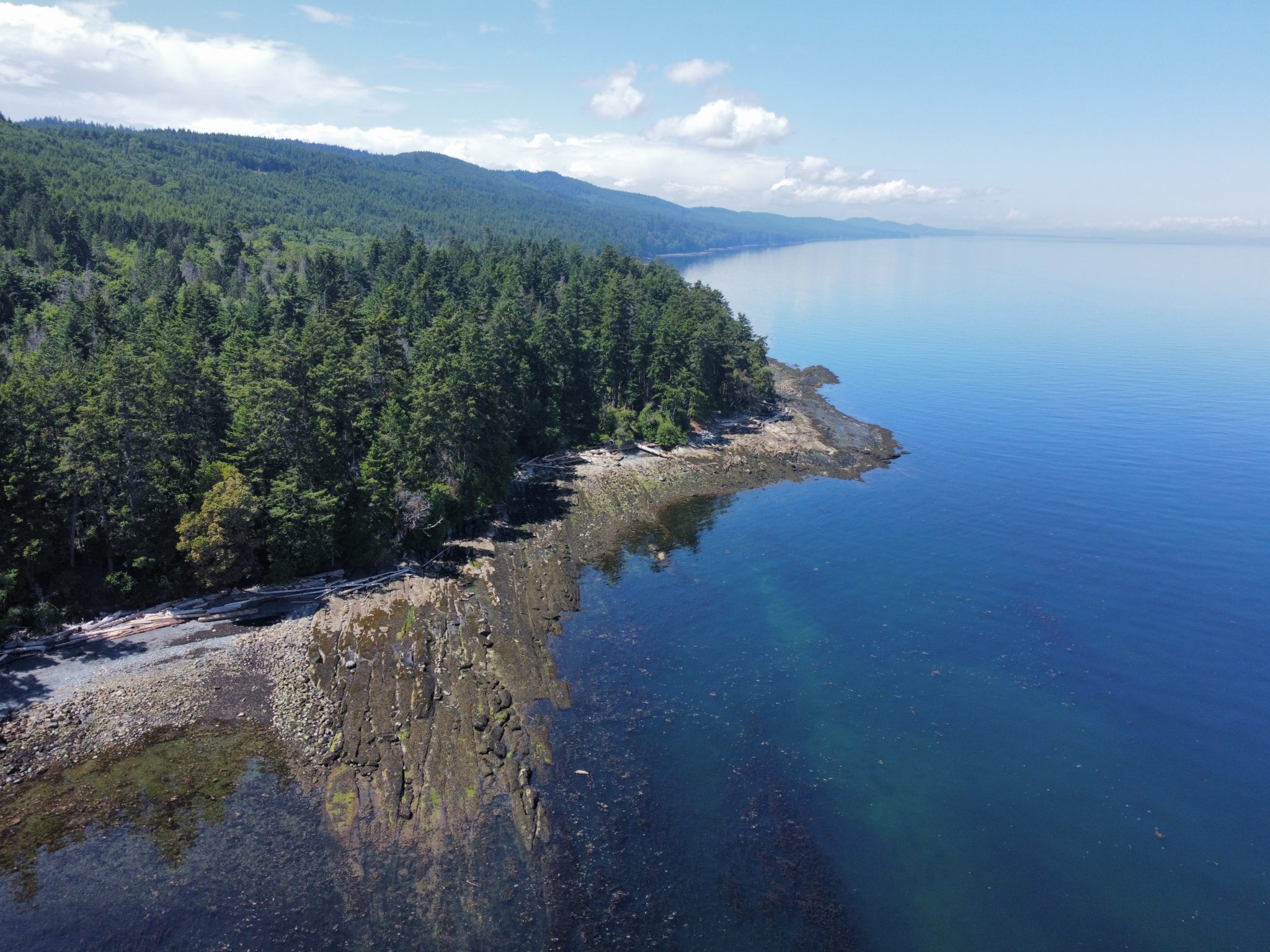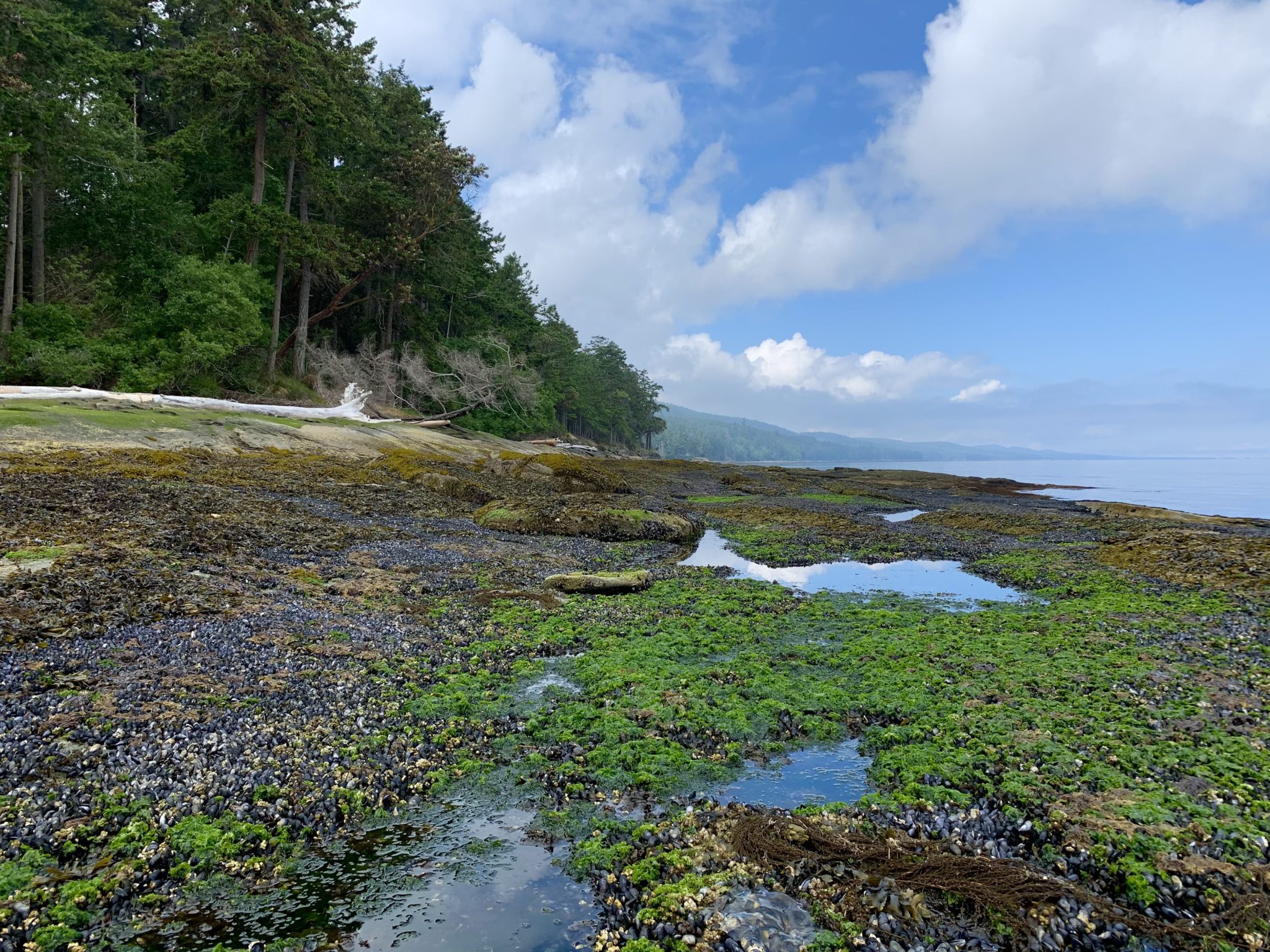
Today, the Galiano Conservancy Association, a community-based land trust and registered charity dedicated to preserving and enhancing the human and natural environment, together with The Nature Trust of British Columbia, one of the province’s leading non-profit land conservation organizations, announce that 26.5 hectares (65.5 acres) of ecologically diverse coastal Douglas-fir forest and over one kilometre of pristine rocky shoreline at Cable Bay has now been purchased for conservation.
Zoned for a six-lot residential subdivision, this waterfront property has been saved from development thanks to conservation-minded land owners who preferred to see the area remain as forest and held off selling the property until adequate funds could be raised to purchase the property for conservation purposes. The acquisition is the culmination of a multi-year partnership between the Galiano Conservancy Association and The Nature Trust of BC and will add to a network of connected conservation areas totalling over 500 hectares (1250 acres) that spans the width of the island.
DOWNLOAD THE PDF OF THIS NEWS RELEASE
“The twin crises of climate change and biodiversity loss are two sides of the same coin, and we must tackle them together. By working with partners such as the Galiano Conservancy Association and the Nature Trust of British Columbia, we are helping to protect British Columbia’s natural environment and build a healthier and more resilient future for our children and grandchildren. Programs such as Canada Nature Fund’s Natural Heritage Conservation Program are helping us progress toward conserving a quarter of land and a quarter of oceans in Canada by 2025”
— The Honourable Steve Guilbeault, Minister of Environment and Climate Change

Part of the traditional and unceded territories of the Penelakut, Hwlitsum, and other Hul’qumi’num-speaking peoples, the Cable Bay area has a long history of use and habitation by Coast Salish Peoples. According to Florence James, a respected Coast Salish Elder and Hul’qumi’num language teacher from Penelakut Island, the area is traditionally known as Qw’xwulwis, the Hul’qumi’num word for the action of paddling, and was an ideal place to live thanks to its sheltered geography, abundant traditional food sources, and freshwater creek.
Galiano Island is part of the Southern Gulf Islands archipelago and lies near the centre of both the biologically diverse Salish Sea and the provincially and globally imperiled Coastal Douglas-fir biogeoclimatic zone (CDF). Home to the highest number of at-risk species and ecosystems in BC, the CDF is of great conservation concern, yet only 11% of its area is currently protected.
“The forest at Cable Bay is diverse and vibrant, with impressive stands of firs and cedars, majestic groves of towering maples, and sounds of bird life all around. The shoreline is pristine – lush and rocky, with seals, otters and sea birds ever present – a piece of wilderness with a panoramic view of the Salish Sea.” — Chessi Miltner, Executive Director, Galiano Conservancy Association
Cable Bay and the network of protected areas it joins are a valuable remnant of the CDF. Preserving these forests helps maintain habitat and connectivity for native plants and wildlife species. The sheltered waters and rich biodiversity of nearshore areas found at Cable Bay also provide significant habitat for resident and overwintering birds, intertidal life, fish and marine mammals.
This important land acquisition was made possible by the Government of Canada through the Natural Heritage Conservation Program, part of Canada’s Nature Fund, and by the Sitka Foundation, MapleCross, the Collings Stevens Family Foundation, and more than 150 individuals including many Galiano Island residents, who generously donated to ensure Cable Bay is protected for generations to come.
The Cable Bay property is projected to formally open to the public in early 2022, once a management plan and signage are in place.

Quotes
- “Protecting the Coastal Douglas-fir zone is one of our top conservation priorities. We are excited to work with the local community on Galiano Island to save this rare and important ecosystem.” — Jasper Lament, CEO, The Nature Trust of BC
- “The area is called Qw’xwulwis, a sheltered place to live with abundant halibut, lingcod, rock cod, seals, ducks, shellfish – and a creek with cool, clear running water. The location provided access up and down the coast and across to the Fraser River to fish – that’s why they were there. Qw’xwulwis is the word for the action of paddling.” — Florence James, Coast Salish Elder and educator, Penelakut Tribe
- “Preserving connectivity among biologically diverse parts of the landscape is an important step in enabling ecosystems to adapt to climate change; protecting Cable Bay will make the entire conservation network on Galiano more resilient.” — Eric Higgs, Professor, School of Environmental Studies, University of Victoria; Development Committee Chair, Galiano Conservancy Association
- “I grew up swimming and hiking at Cable Bay surrounded by majestic trees and wilderness – I’m delighted and thankful that my children can do the same.” — Chessi Miltner, Executive Director, Galiano Conservancy Association

FACTS
- Cable Bay is a 26.5-hectare (65.5-acre) waterfront parcel of undeveloped land located on the east coast of Galiano Island, approximately 45 km southwest of downtown Vancouver, and 60 km north of downtown Victoria.
- Galiano Island lies entirely within the Coastal Douglas-fir biogeoclimatic zone, the smallest and rarest of 16 such zones in BC, and of great conservation concern.
- The protected parcel is densely forested, containing mixed second-growth and mature forest, and a scattering of old-growth along forest edges.
- This acquisition protects over 1km of rocky coastline and near-shore habitat adjacent to a provincially designated Rockfish Conservation Area.
- The Cable Bay property will become part of a network of more than 500 hectares (1250 acres) of parkland and conservation areas extending across Galiano Island coast-to-coast from Trincomali Channel to Georgia Strait.
- Cable Bay is part of an intact watershed with a creek that emerges from the Great Beaver Swamp, a large wetland within the neighbouring protected area network.
- The Cable Bay area has a long history of use and habitation by Coast Salish Peoples, and is known in Hul’qumi’num as Qw’xwulwis, which is the word for the action of paddling.
- Situated at Galiano’s narrowest point (1300 m), Qw’xwulwis was the northeastern terminus of a portage route across the island between the Georgia Strait and Trincomali Channel, and an ideal place to wait for good weather and tides when crossing to the Fraser River by canoe.
- Cable Bay is a haven for resident and migratory birds, intertidal life, fish and marine mammals; the nutrient-rich waters serve as excellent nurseries for young fish and are an ideal environment for overwintering birds.
- Three sensitive ecological communities are found on the property, two of which are considered critically imperiled globally.
- Species at risk known to frequent the property and adjacent coastline include Great Blue Heron, Brant, Olive-sided Flycatcher, Barn Swallow, California Gull, Surf Scoter, Band-tailed Pigeon, Double-crested Cormorant, Brandt’s Cormorant, Purple Martin, Common Murre, Steller Sea Lion, and Red-legged Frog. It is highly likely that other sensitive species, including Marbled Murrelet, Horned Grebe, and endangered Little Brown Myotis also use the property.
